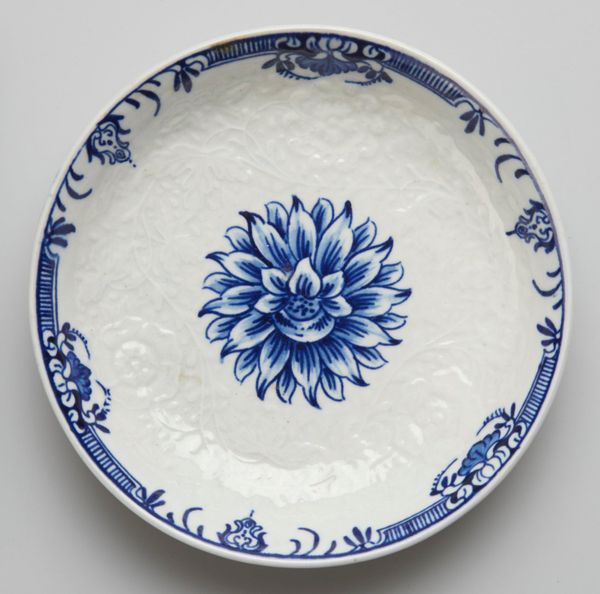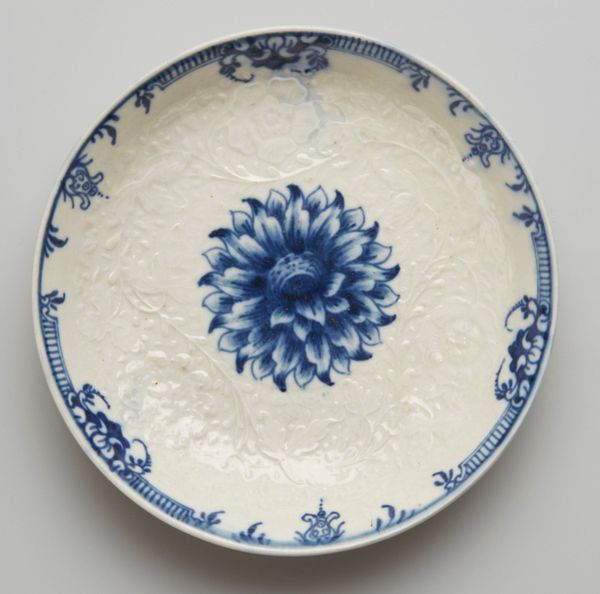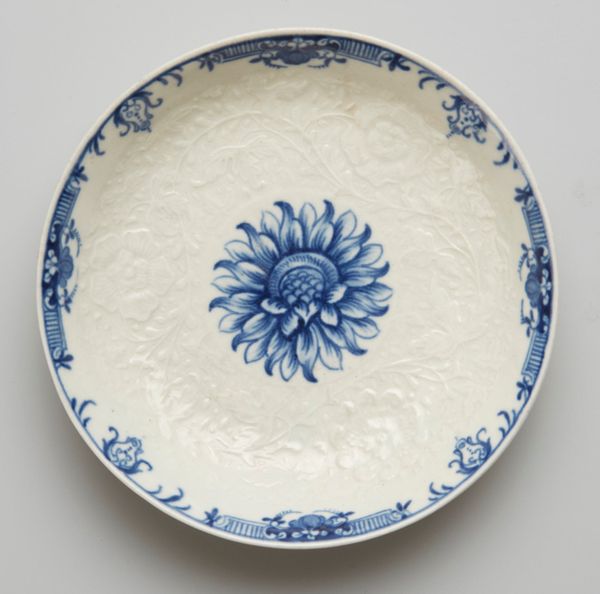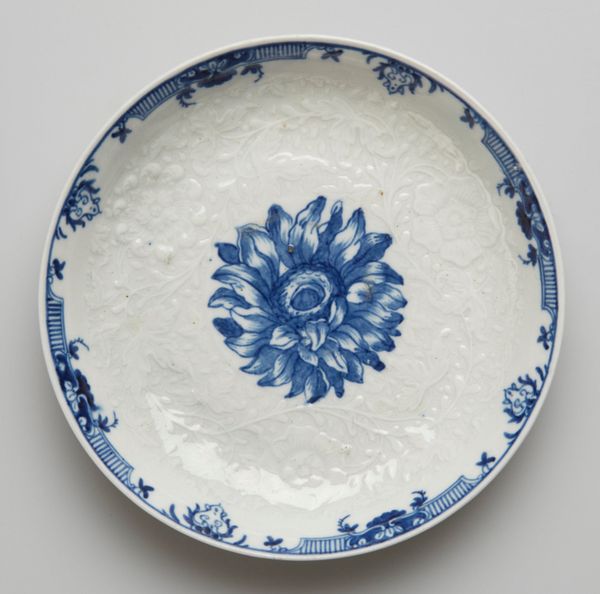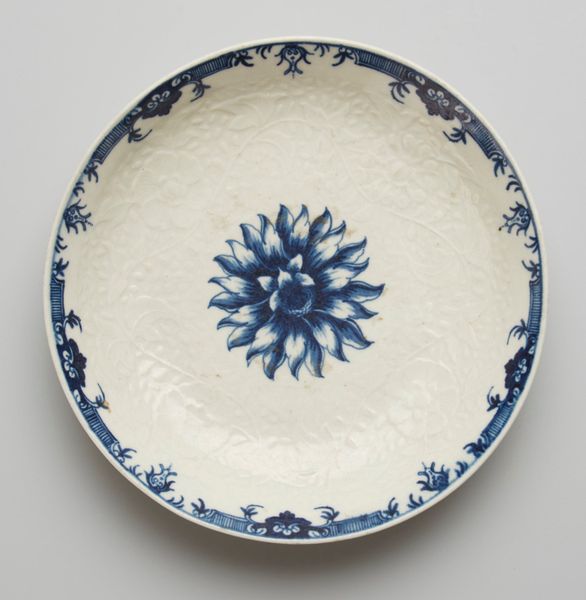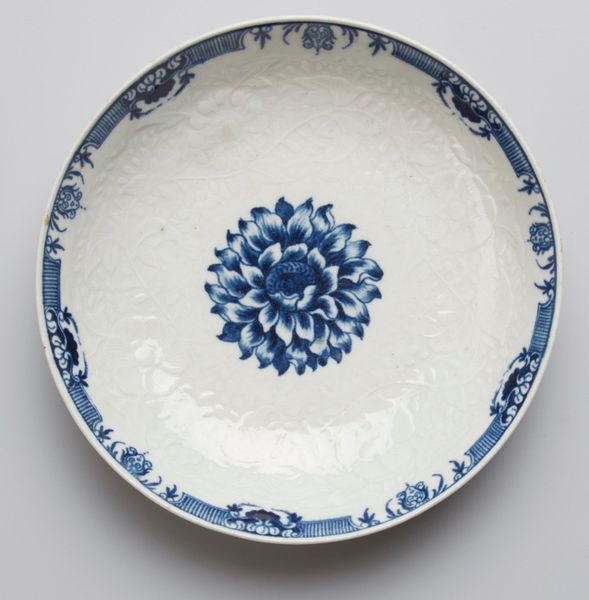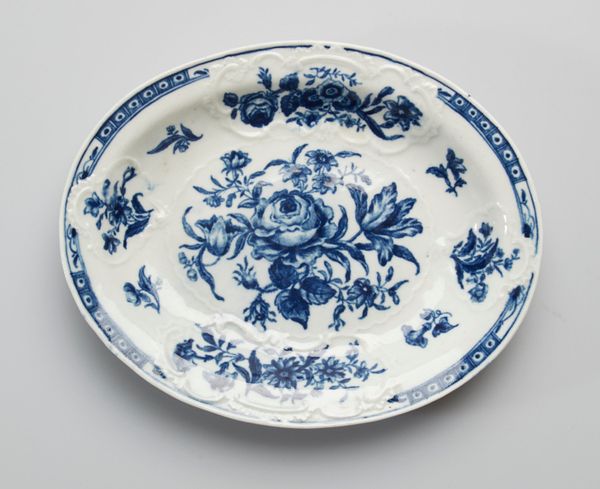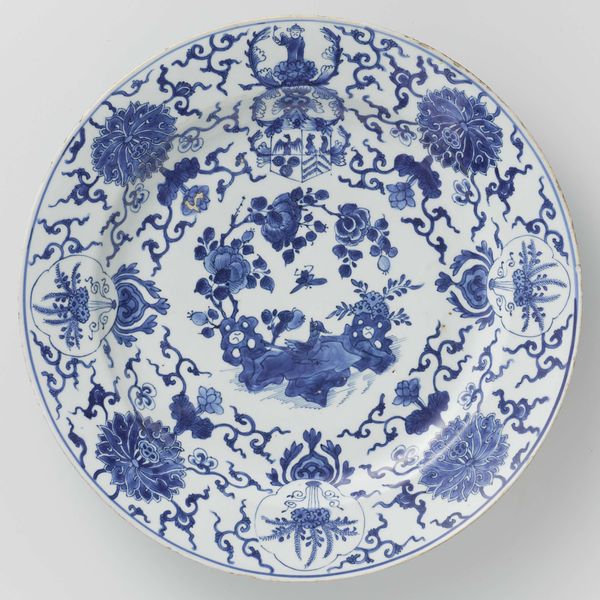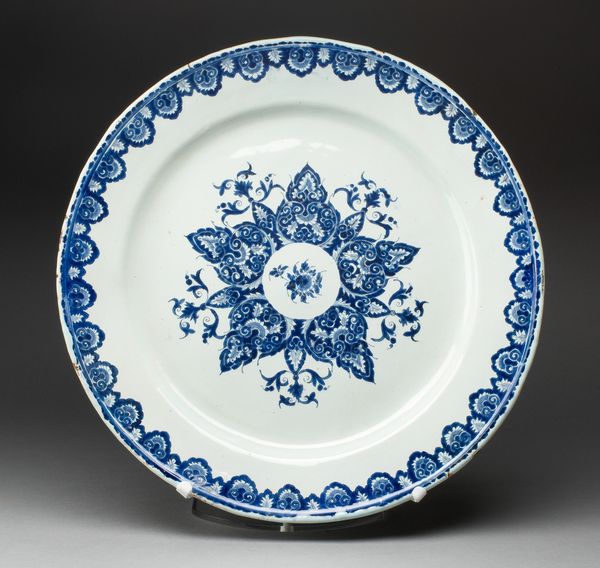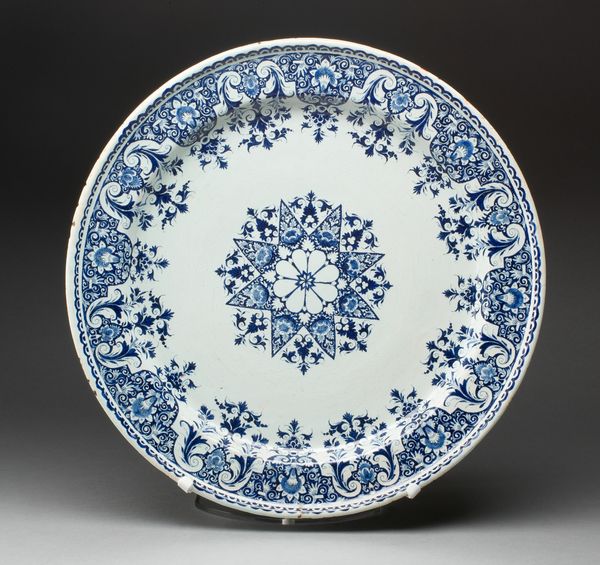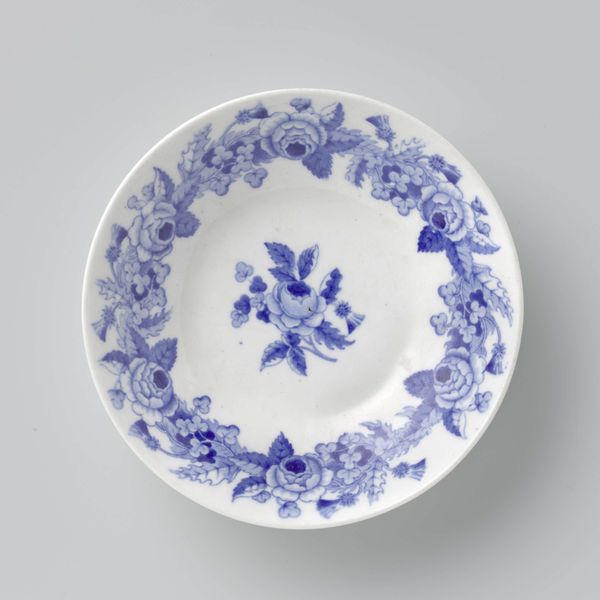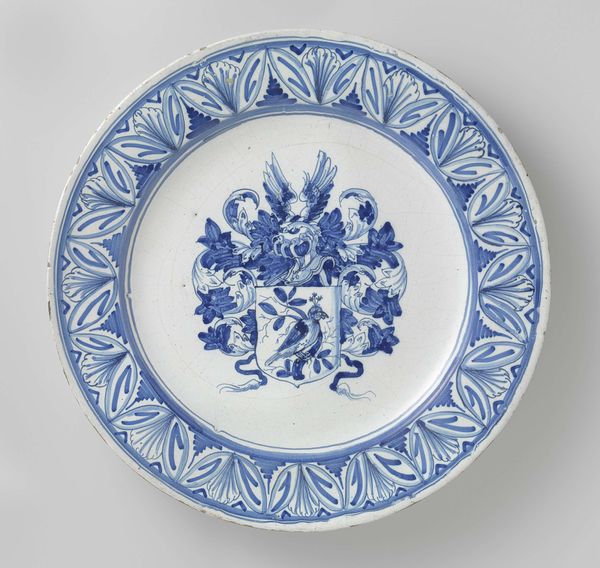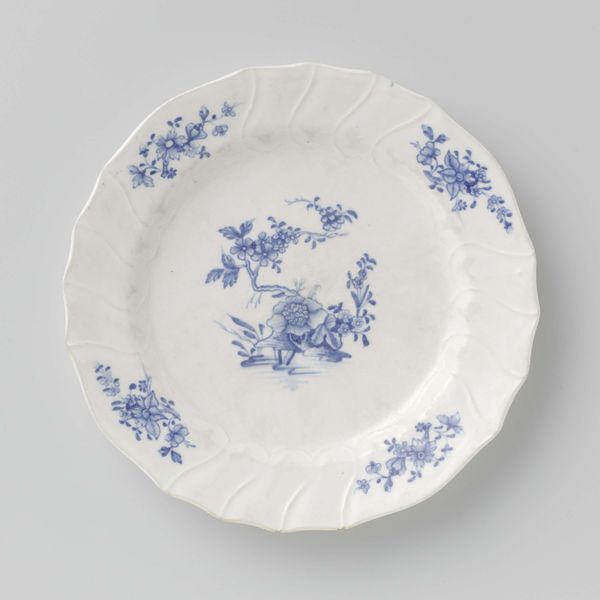
Saucer c. 18th century
0:00
0:00
ceramic, porcelain
#
asian-art
#
ceramic
#
porcelain
#
ceramic
Copyright: Public Domain
Curator: Welcome. Here we have a "Saucer," crafted by the Worcester Porcelain Works around the 18th century. It resides here at the Minneapolis Institute of Art. Editor: My initial impression is one of crispness and delicacy. The blue against the white porcelain creates such a clean, precise visual statement. And it seems like a celebration of radial symmetry! Curator: Indeed. These porcelain pieces tell fascinating stories about cross-cultural exchange, especially how Asian art influenced European craftsmanship. Porcelain production was initially a closely guarded secret in China and later Japan, and European manufacturers such as the Worcester Porcelain Works invested heavily in replicating its unique characteristics, in England. This piece is from when that knowledge started arriving in the West. Editor: I’m particularly drawn to how the central floral motif contrasts with the detailed border. There’s an almost mathematical elegance in its repetition and variation. Note the precise curves of the decoration. Curator: Absolutely. During this period, decorative arts like porcelain were often reflections of global power dynamics. Objects such as these represented a growing sense of worldliness for wealthy families in Britain at the time. Owning these ceramics were acts of display; signaling your sophistication, your economic standing, and the British Empire. Editor: And the material itself—porcelain. A smooth, fine surface is almost perfect. Yet it seems also fragile; so precious! This delicate object, surviving centuries, and continuing to represent culture and power. Curator: Right, we should be thinking about the ways value is constructed through the colonial enterprise. Here is something beautiful, certainly. But whose values and tastes are shaping our appreciation, our very consumption of these aesthetics? This type of cultural property acquired a very gendered dimension, too; as women’s artistry, for instance, was very undervalued in the arts and crafts. Editor: These objects contain so many cultural layers—commerce, status, skill, taste, empire—that are encoded and reveal the rich material heritage from past communities and generations. Curator: It’s a tangible reminder of the complexities of history, how cultural exchanges and aesthetic appreciations have always been intertwined with the global currents of power and social change.
Comments
No comments
Be the first to comment and join the conversation on the ultimate creative platform.

